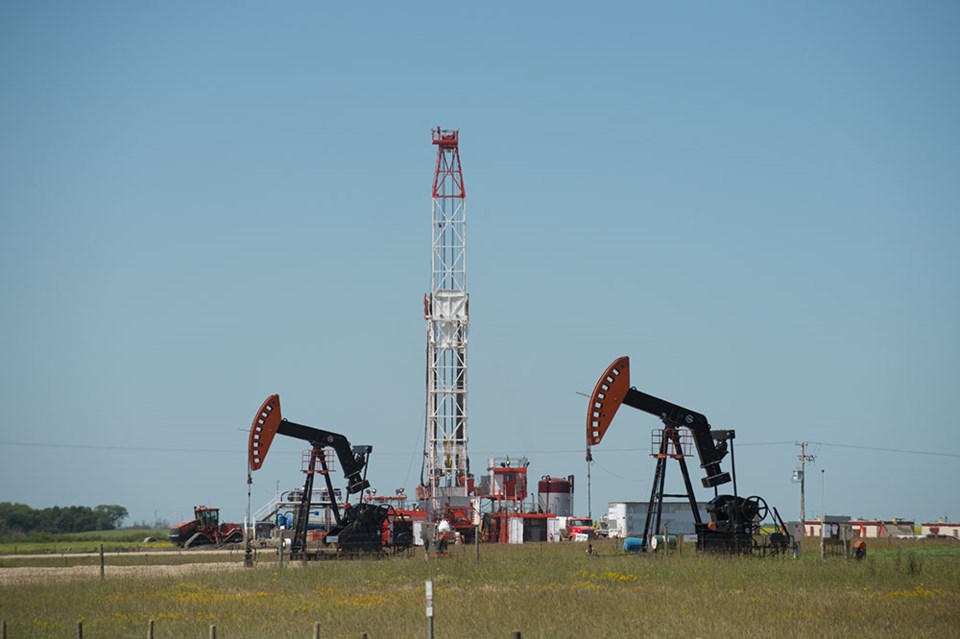Arcola, Calgary– There weren’t a lot of drilling rigs working in southeast Saskatchewan in mid-July, but one that was turning to the right was Betts Drilling Rig 3, punching a hole south of Arcola for Triland Energy Inc.
Triland is a family-owned and operated junior producer, based in Calgary. Hugh Borgland is the patriarch, having been involved in the southeast oilpatch since the late 1970s. He used to own and operate Landex Exploration and Landex Petroleum. His two sons, Brett and Craig, each run an oil company. Brett runs Triland, while Craig runs Highrock Resources. They sold Highrock Energy to Legacy Oil + Gas in recent years.
(The third Borgland sibling, Dr. Stephanie Borgland, runs a neuroscience research lab in Calgary, and is not involved in the oilfield.)
“We are run separately,” Brett Borgland said via telephone on July 22. “I’m the president of Triland. Craig is president of Highrock Resources. Hugh is the chair of Triland and a director of Highrock.
“We started in March of 2008,” Brett said.
All their property is in southeast Saskatchewan. Much of it is in the Wordsworth area, south of Arcola, but they also have property at Ingoldsby, near Storthoaks, and Weyburn-Elswick.
Triland started by acquiring a property from a company in receivership. That property was at Fletwood, north of Moose Mountain Provincial Park. “It needed a lot of TLC – one well had a broken pump. We put a new jack on it. It needed a new fibreglass flowline.”
There were two injector wells providing pressure maintenance.
“It was Tilston – with a high water cut. We were almost washing the rock. It was 98 to 99 per cent water.”
From those humble beginnings, the company peaked at about 800 barrels per day. With the current downturn, they’re down to around 500 barrels per day, 98 per cent oil. Their gas at Wordsworth is tied into the ATCO gas plant at Kisbey.
“We’re pretty conservative. My dad lived through the 80s. We stay away from a lot of debt,” Brett said.
“One year, we budgeted 10 wells, but that was before the crash. We budgeted five wells for this year.”
Their fiscal year runs from April 1 to March 30. Their drilling peaked at eight wells in the 2013-2014 fiscal year.
They like to keep their development within their cash flow. They’ll drill an infill well to keep cash flow up, and then step out a well at another property.
Almost all of Triland’s oil is produced from the Frobisher, Alida and Midale formations. That means inexpensive open hole completions. “We try to keep them simple, drill them straight. Get in, get out,” Brett said.
“We don’t want to run multistage fracking. We let the bigger guys figure that out. We’re not adverse to technology. We don’t have the risk tolerance. There’s a lot of luck in this business, for sure. But in the end, you have to drill to make oil.”
The July well was the company’s first well for this fiscal year. They’ve budgeted five wells, with the remainder to be done in the fall and winter, but they can adjust accordingly. With oil at US$45 per barrel, he said, “We’re taking a little less risk in drilling our more proven locations to keep cash flow up. We’re optimistic things will turn around. Maybe this winter, we’ll see $55 to $60.”
He added, “Service costs are coming down, which is good. It’s a bit of a cycle. People have to learn to adapt.”
Brett added that oil at $100 a barrel was not really sustainable, resulting in “too many people, too much equipment and too much debt.”
“It’s all an adjustment period. We made money in the 80s and early 90s at lower prices than there is now.”
Many junior producers have been designed around the build-then-sell model. Brett said that was the case with Landex and Highrock, having been built around a five year timeline of build, sell, repeat. With Triland, he said, “We decided to go a different route. Highrock would be aggressive, Triland would start out slow, work within its means, with no near-term exit point.
“We’re built for the longer term,” he said.
Saskatchewan is a great place for smaller companies, Brett remarked, where you can have sustainable, successful small companies. Landowners and service companies are easy to deal with.
Asked about looking towards 2017, Brett pointed out there’s a lot of political involvement at play. Will Donald Trump be elected president, for instance? So when it comes to predictions, he said, “Throw a dart at the wall.”
“We’re cautiously optimistic. Demand is catching up with supply.”
The proposed TransCanada Energy East Pipeline, with its associated Cromer Lateral, would give companies, like Triland the ability to expand the markets for its oil to Central and Eastern Canada, as well as potential exports via the port at Saint John, N.B. When asked about the project, Brett said, “It’s critical for energy independence.”
He suggested President Barrack Obama’s blocking of the Keystone XL project had to do with U.S. production’s market share.
“We need to look after ourselves,” he said. “I think (Energy East) is huge. It gives us options in pricing. We won’t have to guess at differentials. To me, it’s a no-brainer, but there are a lot of hoops to jump through to get it approved.”




